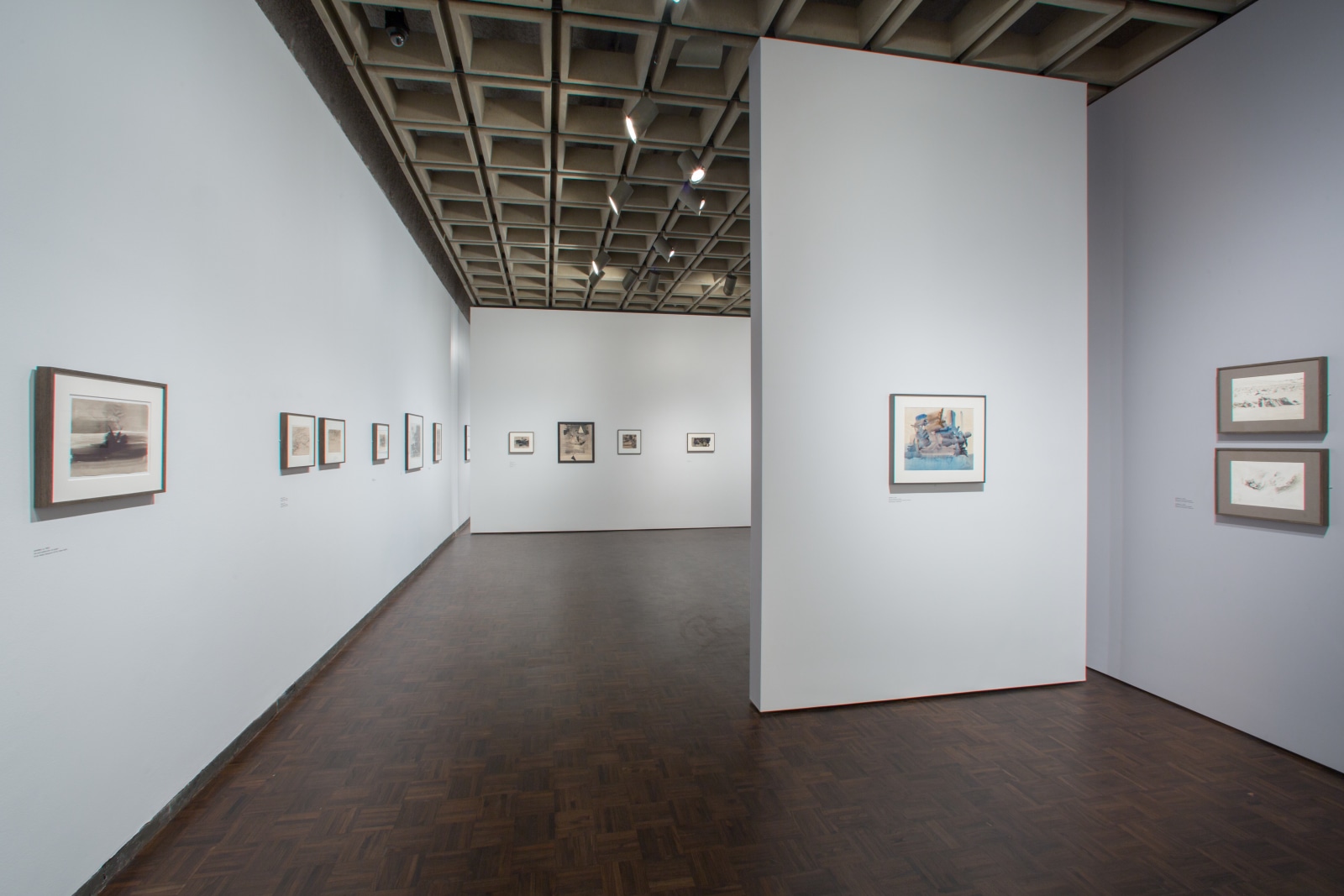
The galleries on the second floor of The Metropolitan Museum of Art’s brand new enterprise, The Met Breuer on Madison Avenue, devoted specifically to modern and contemporary art opened with a retrospective of the Indian artist Nasreen Mohamedi, indicating a commitment to non-Western art for the museum, and conversely securing the artist’s prominence within a global narrative of modernism.
The latter intent is hardly just implicit to the curatorial framework. The wall text one confronts at the onset before catching even a glimpse of any of the works on display insists the artist’s importance as one of the most significant modern artists from post-Independent India and situates her cosmopolitanism by citing influences such as Kazimir Malevich and Paul Klee alongside traditional Islamic art. It goes on to indicate a deviation from the aesthetic concerns of her contemporaries in India, with the exception of VS Gaitonde, another Indian abstractionist who like Mohamedi did not receive the recognition that his work was legitimately due while still living.
With works sourced from a variety of collections, the exhibition does not merely justify this introduction but goes on to prove the claims superfluous. The works speak for themselves far more eloquently, and these identified influences, also acknowledged by the artist during her lifetime, would have served their purpose farther along in the narrative of the exhibition, perhaps to unpack the syncretized elements once the body of work had already been established for its own aesthetics.
That said, what unfolds curatorially from this overly determined introduction provides a deeply moving context to understand the artist’s rigorous commitment to an aesthetic philosophy in both life and art—the two so closely entwined that they were the same for the Mohamedi.
The undated works are periodized in their display to mark different phases in her art-making, as studios shifted from Bahrain and Bombay to Delhi and Baroda, ultimately returning to Bombay as Mohamedi lived out her final days tragically struggling with Huntington’s disease. The exhibition traces a personal journey from splayed, amorphous lines early on in her career to confident, defined linearity in the early 1970s, diagonals evoking through three dimensions later on, and suspended geometric forms towards the end of her life.
If anything, the artist’s deteriorating motor skills seem to have encouraged her to cling to her delicate definitions and controlled minimalism. Her devotion to these measured inscriptions in ink and pencil are validated by her photographs that provide evidence for her philosophy from the world around her. What the exhibit succeeds in conveying is the artist’s profound spiritual engagement with the contours of our visual universe and antecedent forms in a desire to inscribe the world itself. Such macroscopic ambitions are evident in some exceptional works from her days in Baroda. Calculated anomalies, and the depth and dimension of still lines layer in the eyes of the viewer to deliver sensations of motion and fluidity; entire civilizations might reside within them. As the years passed, her concerns seem to have zoomed in to details even more austere, only to shrug away from the edges of the paper into reclusive, floating islands when her illness finally confined her to isolation.
Mohamedi’s diary entries from each of the various phases in her career on display carry poetic meditations on everyday life, art and the world around. Her voice becomes increasingly certain with each passing decade, and increasingly obscured by carefully calibrated, strategic blocks of ink that make her writing seem like interventions upon the harmonious lines of the pages of various notebooks and diaries. The material on display at the exhibition, including photographs, artworks, diaries and references to milestone events in her life, collaborate to firmly place the life and gaze of the artist as the subject of what could otherwise be dismissed at first glance as an abstract engagement with pure form. The artist’s subtle orchestrations offer perspectives on the objects and processes in her intimate environment to reveal truths that would have escaped figuration, placing her artistic vision as a uniquely significant one within international modernism.
-Anushka Rajendran